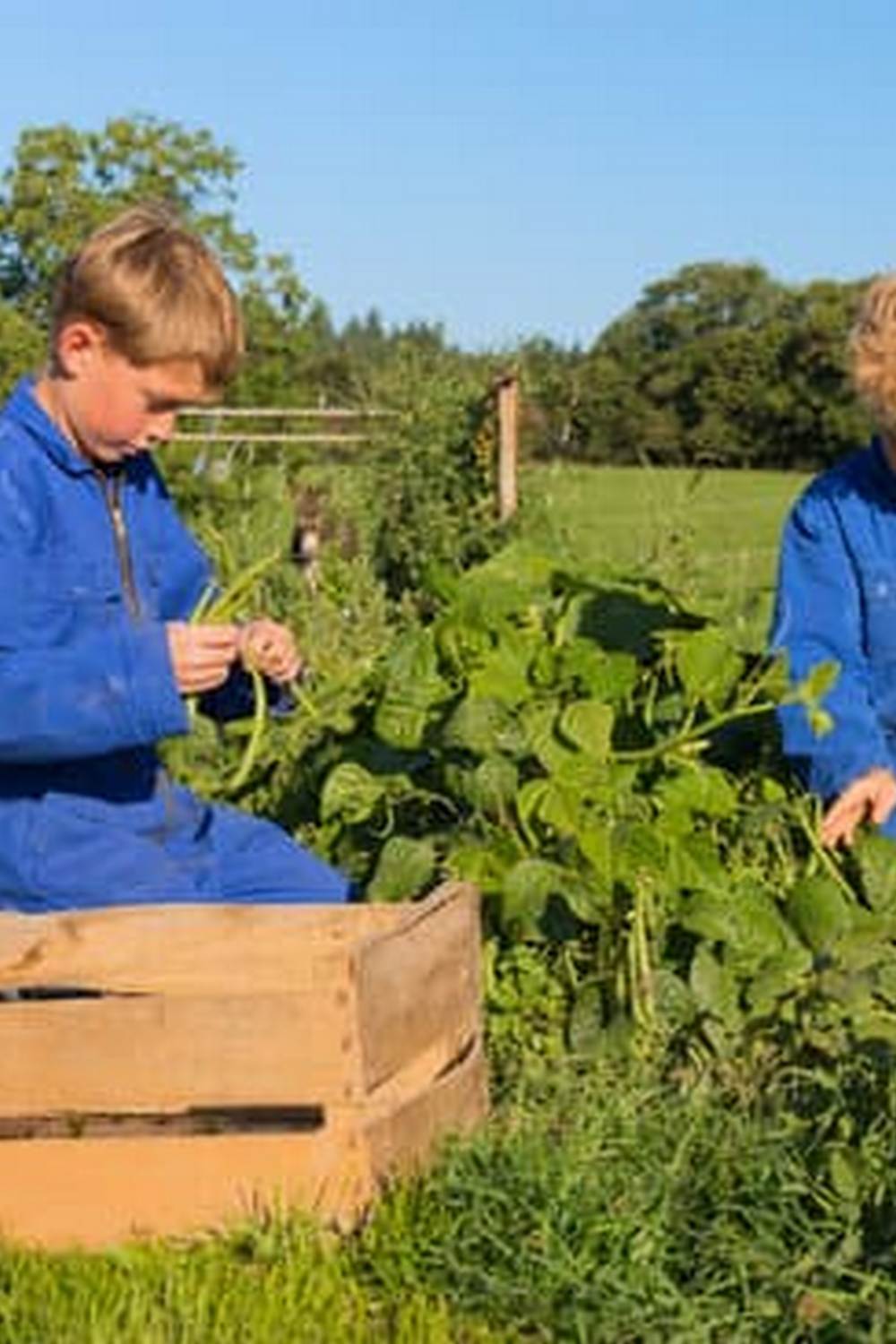Chipmunks are known for their adorable appearance and energetic demeanor, but they can also be a nuisance for gardeners. One common question that arises is, “Do chipmunks eat vegetable gardens?” The answer is yes, chipmunks do have a penchant for munching on the fruits and vegetables that you work so hard to grow.
In this article, we will delve into the world of chipmunks and explore their foraging habits when it comes to vegetable gardens. Understanding these furry creatures’ behavior can help you identify if they are the culprits behind any damage in your garden. From recognizing the signs of chipmunk presence to learning why they are so attracted to vegetable gardens, we will provide valuable insights into dealing with these critters effectively.
Gardening enthusiasts often face frustration when they discover chewed up plants or missing produce in their vegetable beds. Chipmunks can be quite destructive to gardens, causing significant damage through their feeding habits. By gaining knowledge about the extent of the harm chipmunks can inflict on your plants, you can take proactive measures to protect your garden from further destruction. Stay tuned as we uncover ways to prevent chipmunk damage and safeguard your vegetable patches effectively.
Identification
Chipmunks are small, striped rodents that are commonly found in North America. They have a distinctive appearance with their bushy tails and white and black stripes running down their backs. While these furry creatures may seem harmless and adorable, they can wreak havoc in vegetable gardens by nibbling on plants and digging up bulbs.
Signs of Chipmunk Presence
One of the tell-tale signs that chipmunks are responsible for the damage in your vegetable garden is the presence of small holes or burrows near your plants. Chipmunks are known for creating underground tunnels to store food and build nests, so if you notice any openings in the ground around your garden, it could be a sign that these critters are around.
Additionally, you may also find half-eaten fruits or vegetables scattered across your garden, as chipmunks tend to graze on various crops.
Visual Confirmation
Another way to identify if chipmunks are the culprits in your vegetable garden is through visual confirmation. Chipmunks are active during the day, so you may spot them scurrying around your garden or climbing trees nearby.
Keep an eye out for these agile rodents and observe their behavior to determine if they are indeed causing damage to your plants. If you see chipmunks repeatedly visiting your garden, it’s likely that they are the ones responsible for munching on your veggies.
Behavior
Chipmunks, with their adorable appearance and quick movements, may seem harmless at first glance. However, these small rodents can wreak havoc on vegetable gardens if left unchecked. Understanding why chipmunks are attracted to vegetable gardens is essential in devising effective strategies to protect your crops from their voracious appetites.
Love for Seeds and Nuts
One of the main reasons chipmunks are drawn to vegetable gardens is their love for seeds and nuts. Chipmunks have a natural instinct to hoard food for the winter months when resources may be scarce. Your garden’s bountiful array of seeds, nuts, and grains make for an enticing feast for these furry foragers. Once chipmunks discover the rich source of food in your garden, they will keep coming back for more.
Shelter and Protection
In addition to food, vegetable gardens provide chipmunks with shelter and protection from predators. The dense foliage, ground cover, and overturned soil in gardens create ideal hiding spots and burrows for chipmunks to nest and raise their young. With easy access to both food and refuge, it’s no wonder chipmunks find vegetable gardens so appealing.
Water Source
Another factor that attracts chipmunks to vegetable gardens is the presence of a water source. Chipmunks need access to fresh water for drinking and bathing, especially during hot summer months.
If your garden has a bird bath or any other form of standing water nearby, it could serve as an additional draw for chipmunks looking to quench their thirst. By addressing these various factors that attract chipmunks to your vegetable garden, you can better understand their behavior and take proactive measures to protect your precious crops from damage.
Damage
Chipmunks are known to be notorious garden pests that can wreak havoc on vegetable gardens. These small, furry creatures have a voracious appetite and are not picky when it comes to their food choices. So, do chipmunks eat vegetable gardens? The answer is yes, they certainly do. Chipmunks are attracted to a wide variety of vegetables commonly found in gardens, such as tomatoes, cucumbers, squash, and beans.
One of the major damages caused by chipmunks in vegetable gardens is the destruction of crops through nibbling and feeding on fruits and vegetables. Chipmunks are known to not only eat the crops directly but also damage them by tunneling underground. They may uproot plants while creating burrows or tunnels, leading to wilting and even death of the vegetation. Additionally, chipmunks can also spread diseases through their droppings and urine, posing a health risk to both humans and pets.
To protect your vegetable garden from chipmunk damage, there are several measures you can take. One effective method is installing physical barriers such as fences or wire mesh around the garden perimeter to deter chipmunks from entering. Another strategy is using organic repellents like garlic sprays or predator urine that emit odors unpleasant to chipmunks. Maintaining cleanliness in the garden by promptly removing fallen fruits or vegetables can also help reduce chipmunk activity in your garden.
| Chipmunk Damage | Prevention Methods |
|---|---|
| Eating crops directly | Physical barriers (fences) |
| Tunneling underground | Organic repellents (garlic sprays) |
| Spreading diseases | Maintaining cleanliness in the garden |
Prevention
Chipmunks are notorious for raiding vegetable gardens and feasting on a variety of crops. When it comes to the question “do chipmunks eat vegetable gardens,” the answer is a resounding yes. These cute but pesky critters can wreak havoc on your carefully cultivated plants, leaving a trail of destruction in their wake.
One effective way to protect your vegetable garden from chipmunks is by installing physical barriers. Fencing, such as chicken wire or hardware cloth, can be used to create a barrier around your garden bed. Make sure the fencing extends at least 12 inches below ground to prevent chipmunks from burrowing underneath. Additionally, adding a small overhang at the top of the fence can deter climbing critters.
Another useful tip is to eliminate potential hiding spots for chipmunks near your garden. Keep woodpiles, brush piles, and dense vegetation like bushes and shrubs away from your garden area. Chipmunks are adept at using these hiding spots as cover before making their move into your vegetable patch. By reducing their opportunities for concealment, you can make your garden less appealing to these furry intruders.
Additionally, consider planting deterrent plants around the perimeter of your vegetable garden. Chipmunks tend to avoid strong-smelling or unappealing plants such as garlic, onions, marigolds, or daffodils. These plants not only act as a natural deterrent but can also add beauty and diversity to your garden landscape while keeping chipmunks at bay.
| Protection Method | Description |
|---|---|
| Physical Barriers | Install fencing with an underground extension and overhang to prevent burrowing and climbing. |
| Eliminate Hiding Spots | Remove woodpiles, brush piles, and dense vegetation near the garden to deter chipmunks. |
| Deterrent Plants | Plant strong-smelling or unappealing plants like garlic, onions, marigolds around the garden perimeter. |
Repellents
Chipmunks can be a nuisance for many gardeners, especially when it comes to vegetable gardens. These tiny creatures are known for their voracious appetites and can wreak havoc on your carefully cultivated crops. If you find yourself asking, “Do chipmunks eat vegetable gardens?” the answer is a resounding yes. Chipmunks are notorious for nibbling on vegetables such as tomatoes, beans, and squash, causing frustration for gardeners everywhere.
To effectively deter chipmunks from ravaging your vegetable garden, consider using the following repellents:
- Mesh Fencing: Install wire mesh fencing around your garden to create a physical barrier that prevents chipmunks from entering.
- Repellent Sprays: Use commercial or homemade repellent sprays that contain ingredients such as garlic, hot peppers, or predator urine to deter chipmunks.
- Motion-Activated Devices: Set up motion-activated sprinklers or ultrasonic devices that startle chipmunks and encourage them to stay away from your garden.
In addition to these repellents, there are also natural and eco-friendly methods you can employ to keep chipmunks at bay:
- Plant Strong-Smelling Herbs: Cultivate herbs like mint, lavender, or marigolds around the perimeter of your garden to mask the scent of your vegetables and deter chipmunks.
- Use Beneficial Insects: Introduce beneficial insects like ladybugs or praying mantises into your garden, as they can help control chipmunk populations by preying on them.
- Implement Companion Planting: Companion planting involves growing certain plants together that benefit each other; consider planting garlic near vulnerable crops to repel chipmunks.
By incorporating these effective repellents and natural deterrents into your gardening routine, you can protect your vegetable garden from the persistent snacking habits of chipmunks and enjoy a bountiful harvest without worrying about pesky intruders.
Natural Deterrents
Chipmunks can be adorable creatures to observe in the wild, but when they start snacking on your vegetable garden, they can quickly become a nuisance. Fortunately, there are several environmentally friendly methods you can implement to discourage chipmunks from entering your precious garden space.
Here are some natural deterrents you can try:
- Plant garlic and onions: Chipmunks have a strong sense of smell and are deterred by strong odors like those emitted by garlic and onions. Planting these aromatic crops around the perimeter of your garden can help keep chipmunks at bay.
- Use predator urine: While it may sound unpleasant, predator urine such as that of foxes or coyotes can be an effective repellent for chipmunks. These scents signal danger to chipmunks, causing them to steer clear of the area. You can find predator urine products at your local garden center.
- Create barriers: Physical barriers like chicken wire or hardware cloth can prevent chipmunks from accessing your vegetable garden. Bury the barriers at least a foot deep underground to prevent burrowing, and ensure they extend a few feet above ground level to deter climbing.
In addition to these natural deterrents, there are other tactics you can employ to discourage chipmunks from feasting on your vegetables:
- Maintain cleanliness: Remove any fallen fruits or vegetables from the ground promptly, as these provide an easy and enticing food source for chipmunks.
- Install motion-activated devices: Motion-activated sprinklers or lights can startle chipmunks and deter them from approaching your garden. This humane method helps keep chipmunks away without causing them harm.
- Encourage natural predators: Invite predators like owls, hawks, or snakes into your garden area by providing suitable habitats for them. These natural predators will help keep chipmunk populations in check and reduce the likelihood of damage to your vegetable plants.
By incorporating these environmentally friendly methods into your gardening routine, you can effectively discourage chipmunks from entering your vegetable garden without resorting to harmful chemicals or traps. Protecting your harvest while maintaining a harmonious balance with nature is possible with these natural deterrents in place.
Conclusion
In conclusion, it is evident that chipmunks can indeed be a nuisance when it comes to vegetable gardens. Their foraging habits can result in significant damage to crops, leaving gardeners frustrated and disappointed. By identifying the signs of chipmunk activity in your garden, such as small burrows near plants or missing produce, you can take the necessary steps to address the issue promptly.
Understanding why chipmunks are attracted to vegetable gardens is crucial in devising effective prevention strategies. These adorable creatures are drawn to the abundance of food and shelter that gardens provide, making them difficult to deter once they have established a presence. Implementing preventive measures such as installing physical barriers, utilizing repellents, and maintaining a tidy garden can help mitigate the risk of chipmunk infestations.
Frequently Asked Questions
Do Chipmunks Damage Vegetable Gardens?
Chipmunks can indeed cause damage to vegetable gardens. These critters are known for digging up bulbs, eating seeds, munching on young plants, and even stealing ripe fruits and vegetables. Their presence in the garden can lead to frustration for many gardeners.
How Do I Keep Chipmunks Out of My Vegetable Garden?
There are several strategies you can employ to keep chipmunks out of your vegetable garden. One effective method is to install a barrier like a fence buried at least 12 inches below the ground to prevent them from burrowing underneath. Additionally, using repellents that have a scent or taste unpleasant to chipmunks can also deter them from entering your garden.
Will Chipmunks Eat My Tomato Plants?
Chipmunks are known to have a preference for fruits and nuts, but they may also nibble on tomato plants if given the opportunity. They are more likely to target the ripe tomatoes rather than the plants themselves. Protecting your tomato plants with fencing or other barriers can help prevent chipmunks from snacking on your harvest.

If you’re looking to get into vegetable gardening, or are just looking for some tips on how to make your current garden better, then you’ve come to the right place! My name is Ethel and I have been gardening for years. In this blog, I’m going to share with you some of my best tips on how to create a successful vegetable garden.





